I’m going to be reporting on a bunch of geared tripod heads from China, mostly, and two from Switzerland. First up — and by far the worst — is this LuLan D head.
It has non-geared base yaw, and geared pitch and roll. There are locks for all three. You can see the base yaw lock on the right, and the pitch lock is the larger gray ring on the left.
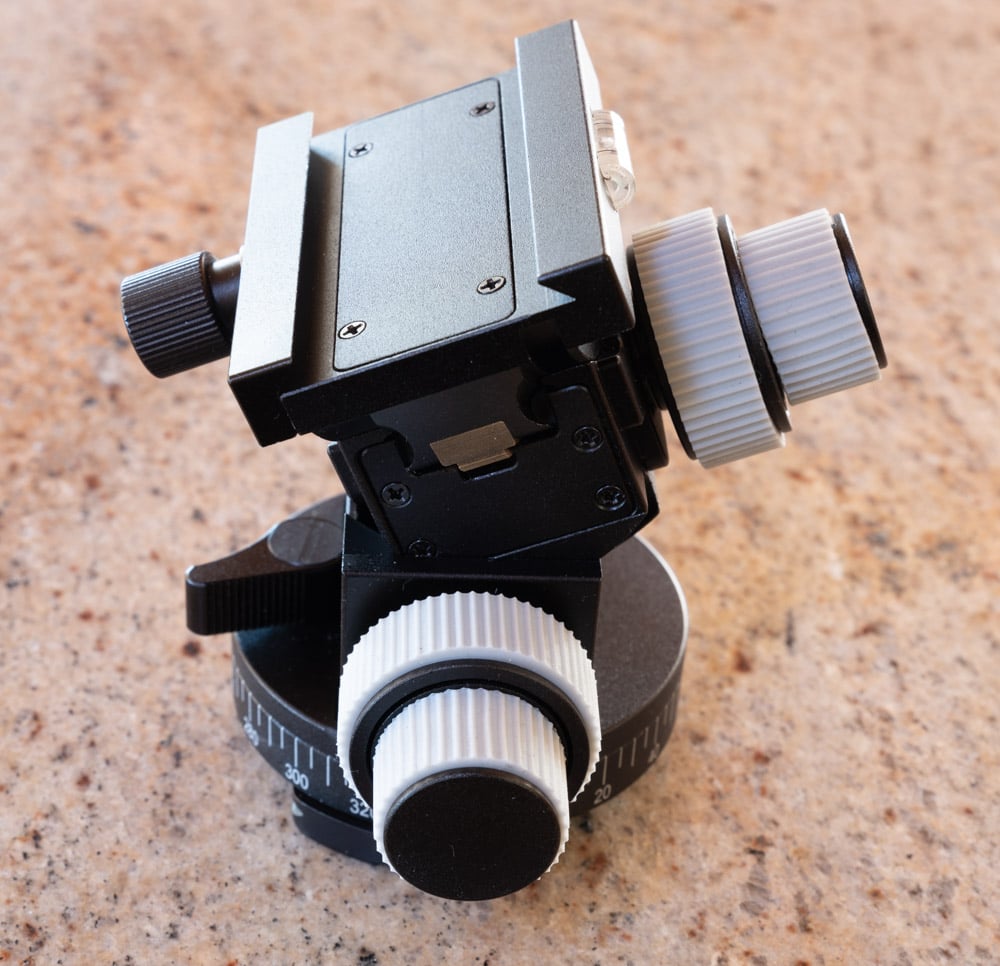
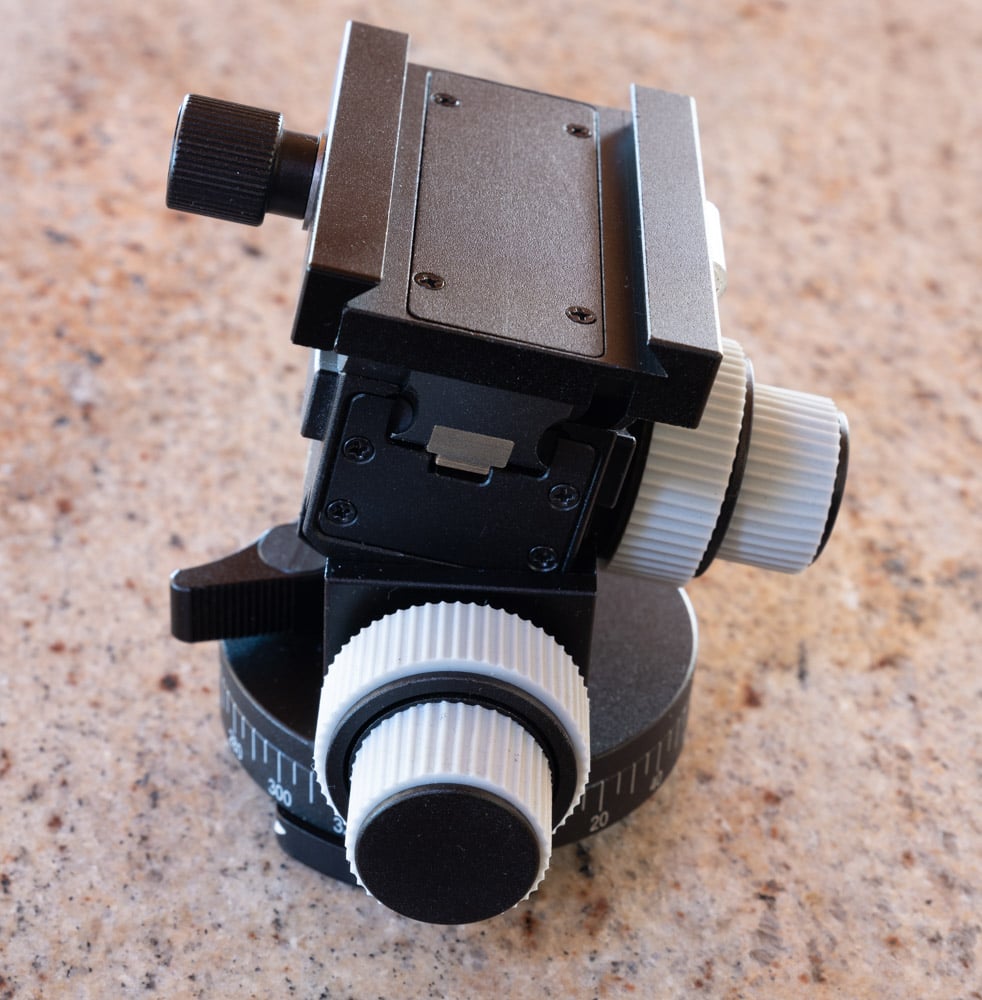
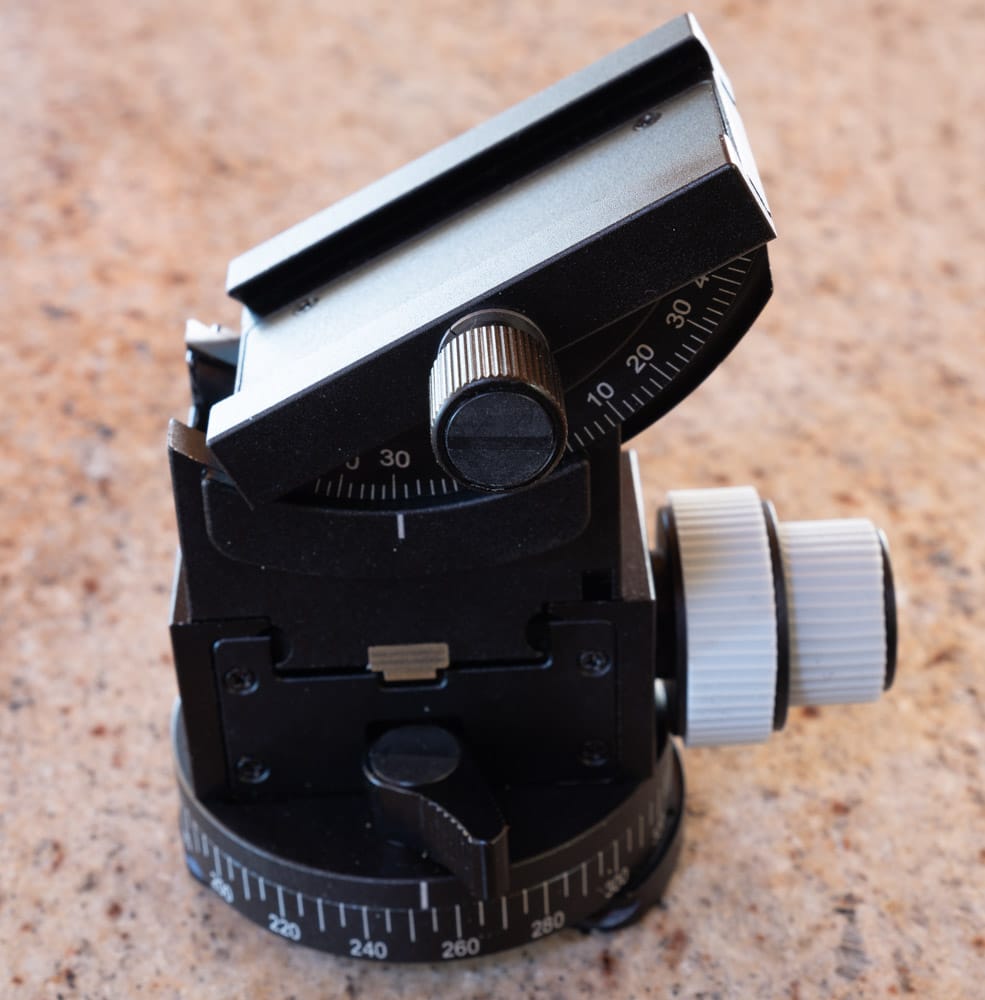
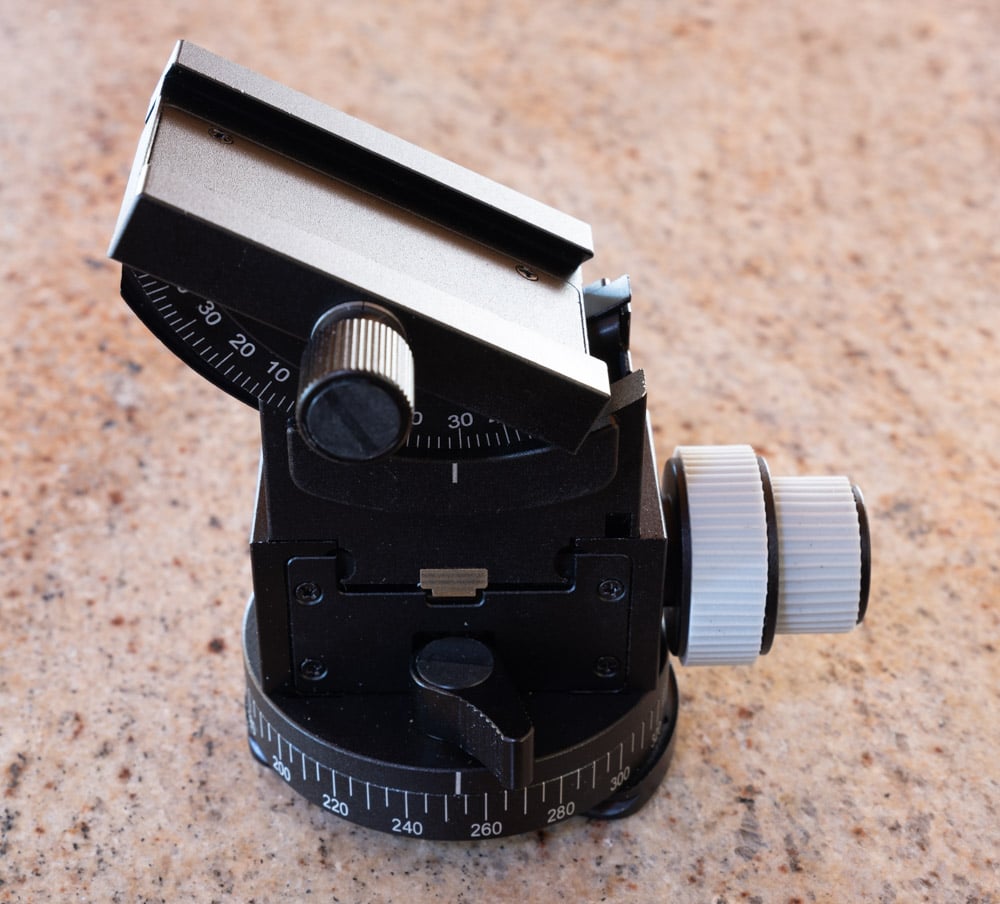
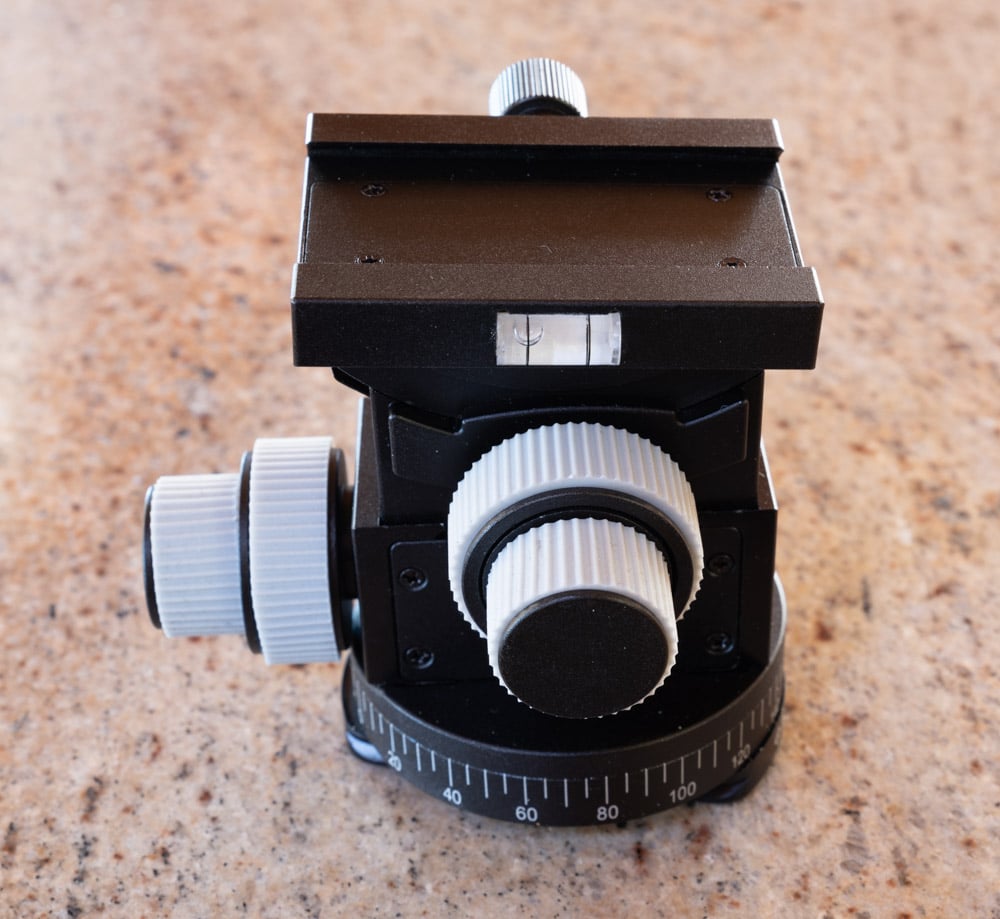
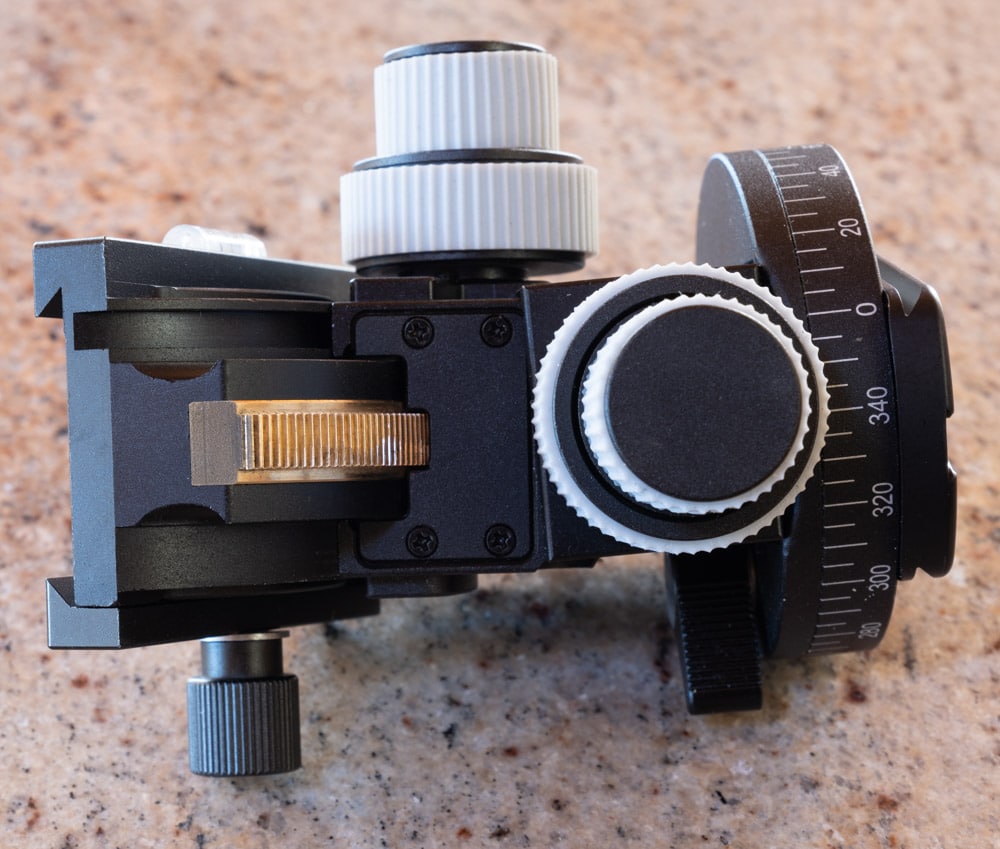
This is an inexpensive head, but I don’t recommend it at all. It has serious design and construction deficiencies.
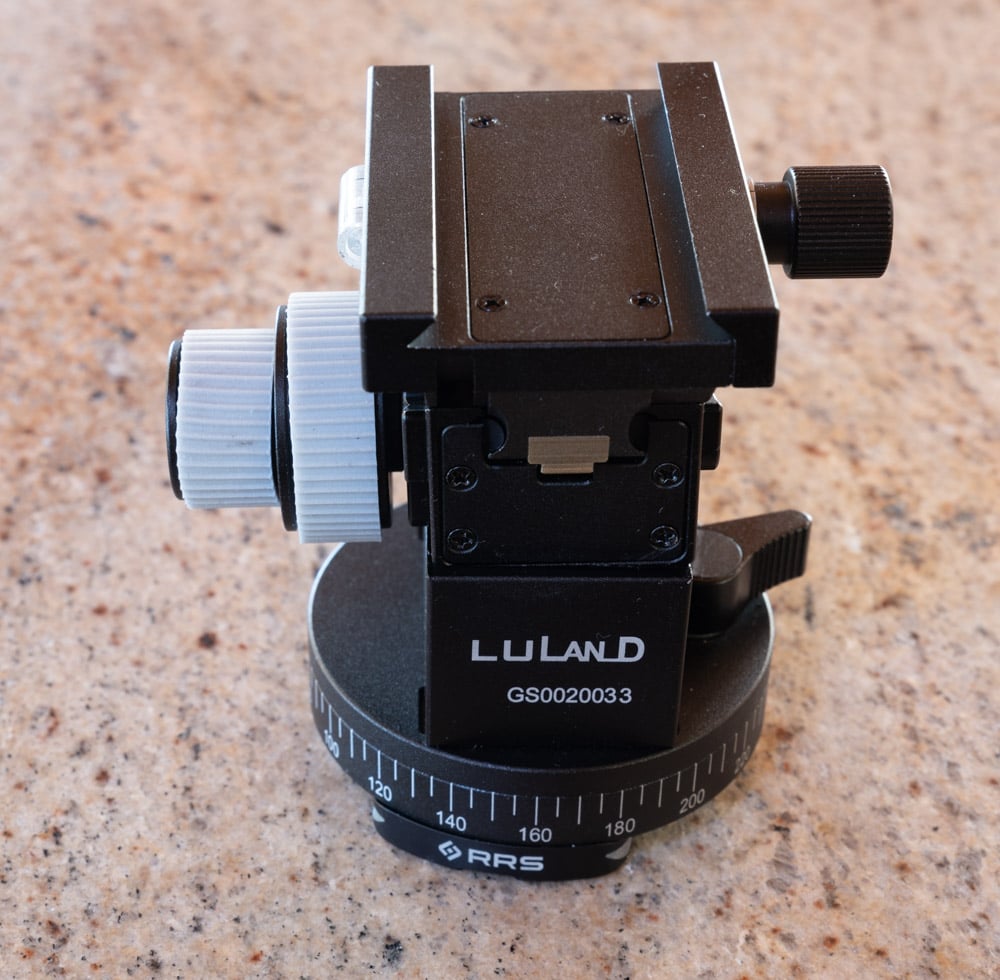
A few counterpoints:
I have another variation (older?) of this head. What seems new is the capping plates mounted with Phillips screws – on mine the design is more open. Presumably this is to protect the gears from dust etc. Mine has a level for roll, in an area now covered by one of those plates.
Mine has a roll indicator. That area is also covered by a plate.
That the scales go further than 29 degrees doesn’t bother me a lot – specs clearly stated 29 degrees. It raises questions but is a cosmetic issue at best.
Roll is typically used for leveling the horizon – if you need more than 10 degrees then you might want to adjust your tripod a bit. There might of course be completely different use cases where you need more than 10 degrees roll – and the precision of a geared head – but I have not encountered such a situation over 40 years.
The gears on mine are as smooth as on any geared head I have tried. Uneven manufacturing standard is of course a concern.
Obviously the design was revised, but the scale still goes to 40 degrees. That could have been revised as well. Odd.
In summary, I’m reasonably happy with mine. It does what I expected it to do, for a good price, and it has been a joy to use. I really like that the friction of gears can be adjusted. If you expect Cube design and quality you will of course be disappointed.
FYI, In the description of this posting you can see the older, open design.
The posting photos show the newer design.
https://www.ebay.com/itm/184923134160?mkcid=16&mkevt=1&mkrid=711-127632-2357-0&ssspo=H5-3nRAvRi2&sssrc=2349624&ssuid=hI9nEeZfStG&var=&widget_ver=artemis&media=COPY
Just came across this post. Aside from the issues you noted, I was hoping you could tell me if the head has any slop/play in it. That is, once your position is set, does it wiggle any? Thanks!
I’m sorry, but I don’t remember, and the head is long gone.